Crown staplers are used for heavy-duty applications, while brad nailers are ideal for precision woodworking tasks. A crown stapler is suitable for securing thick materials such as upholstery, insulation, and carpet padding, while a brad nailer is best for delicate work like attaching trim, paneling, and moldings.
Both tools use different fasteners – crown staplers use staples while brad nailers use brads, which are thinner and smaller. Understanding the specific task at hand will help determine whether a crown stapler or brad nailer is the right tool to use.
When it comes to choosing between a crown stapler and a brad nailer, it’s important to understand the differences and capabilities of each tool. While they may seem similar, crown staplers and brad nailers serve different purposes and are suitable for different types of projects. This article will discuss the key differences between crown staplers and brad nailers, including their usage, fasteners, and applications. By the end, you will be able to make an informed decision on which tool is best suited for your specific needs.
Key Differences Between A Crown Stapler And A Brad Nailer
|
A crown stapler is commonly used for heavy-duty applications such as installing roofing materials, constructing fences, or assembling cabinets. It provides secure and permanent fastening, making it ideal for tasks that require high strength. On the other hand, a brad nailer is mainly used for more delicate projects like attaching trim, molding, or crafts. It offers a more discreet fastening solution, leaving smaller holes that are easier to conceal. Both tools utilize different types of fasteners. A crown stapler uses crown staples which are wider and provide greater holding power. They are available in various sizes to accommodate different applications. On the other hand, a brad nailer uses brad nails which are thinner and leave smaller holes, making them suitable for finishing work where aesthetics matter. A crown stapler delivers strong and secure fastening due to its design and wider staples. It can tightly hold materials together, making it ideal for heavy-duty applications. A brad nailer, while not as powerful, still provides sufficient strength for lighter projects. Crown staplers tend to be larger and heavier due to their intended use for heavy-duty tasks. They often require more force to operate. On the other hand, brad nailers are generally lighter and more compact, allowing for easier handling and maneuverability in tight spaces. Both crown staplers and brad nailers are equipped with depth of drive adjustment features. This allows the user to control the depth at which the fastener is driven into the material, ensuring proper fastening without damaging the surface. |
Pros And Cons Of Using A Crown Stapler
A crown stapler offers many advantages, making it a popular choice among DIY enthusiasts and professionals alike. Its versatility and ease of use are particularly noteworthy.
Versatility And Ease Of Use
A crown stapler can handle a wide range of tasks, from fastening upholstery and carpeting to attaching trim and molding. Its design allows for easy maneuverability in tight spaces, making it ideal for intricate projects.
Ideal Applications For A Crown Stapler
A crown stapler excels in various applications such as cabinetry, woodworking, and interior finishing. Its ability to securely fasten materials and provide a clean finish makes it a reliable tool for these projects.
Benefits Of Using A Crown Stapler
- High efficiency: Crown staplers offer quick and efficient fastening, saving time and effort.
- Strong hold: The crown staple design provides a secure and long-lasting hold, ensuring stability in completed projects.
- Minimal surface damage: Compared to brad nailers, crown staplers leave smaller holes in the material, reducing the need for additional surface repairs.
Limitations And Drawbacks Of Using A Crown Stapler
- Limited fastener options: Crown staplers primarily use staples, which may not be suitable for certain applications.
- Surface visibility: As crown staples tend to be larger and more visible than brad nails, they may not be the preferred choice for projects requiring a seamless finish.
- Potential for splitting: When working with delicate or thin materials, there is a risk of splitting or damaging the surface when using a crown stapler.
Pros And Cons Of Using A Brad Nailer
Pros and Cons of Using a Brad Nailer
Precision and Accuracy: One of the key advantages of using a brad nailer is its ability to provide precision and accuracy in fastening tasks. The thin brad nails used in this tool are designed to create minimal holes that are virtually invisible, making it ideal for projects that require a neat and clean finish. This is particularly useful when working on delicate or intricate woodworking projects where traditional nails might split the material.
Suitable Applications for a Brad Nailer: Brad nailers are commonly used in a variety of trim and molding tasks such as installing baseboards, crown moldings, and window casings. They are also effective for tasks like securing upholstery fabric, attaching decorative trims, or assembling small crafts. The small size and lightweight nature of a brad nailer ensure easy maneuverability and are suitable for both professional carpenters and DIY enthusiasts.
Advantages of Using a Brad Nailer: Brad nailers provide several advantages including ease of use, speed, and efficiency. They offer quick and seamless operation that helps save time and effort. In addition, they have a reduced risk of material splitting and less visible holes which eliminates the need for extensive touch-ups. The availability of various brad nail lengths allows for customization according to specific project requirements.
Limitations and Disadvantages of Using a Brad Nailer: Despite their many benefits, there are certain limitations and disadvantages to consider when working with a brad nailer. The smaller brad nails used may not provide sufficient holding power for heavy-duty applications. Additionally, they may not be suitable for certain materials like thicker wood or hardwoods. It is also important to exercise caution to avoid accidentally shooting nails into adjacent surfaces or causing damage to the workpiece.
Factors To Consider When Choosing Between A Crown Stapler And A Brad Nailer
Factors to Consider When Choosing Between a Crown Stapler and a Brad Nailer:
Project Requirements and Materials: The type of project and materials being used play a crucial role in choosing between a crown stapler and a brad nailer. Crown staplers are ideal for heavy-duty projects, such as roofing or framing, where a stronger hold is required. On the other hand, brad nailers are better suited for delicate projects, trim work, and upholstery, where a more discreet and less damaging fastening option is desired.
Operating Environment and Conditions: Consider the operating environment and conditions of your project. Crown staplers are more suitable for outdoor or rough environments and have better power and penetration on harder surfaces. Brad nailers excel in indoor or delicate environments, as they leave smaller holes and reduce the risk of splitting wood or damaging delicate materials.
Budget and Tool Costs: Both crown staplers and brad nailers come in various price ranges. Consider your budget and the costs of the tools. Generally, crown staplers tend to be more expensive than brad nailers due to their versatility and power.
Personal Preferences and Skill Level: Lastly, personal preferences and skill level also play a role in the decision-making process. Some individuals may have more experience or prefer the ease of using one tool over the other. It’s important to choose a tool that aligns with your comfort level and proficiency to ensure efficient and successful completion of your project.
Application-specific Comparisons: Crown Stapler Vs Brad Nailer
When comparing a crown stapler and a brad nailer, it is important to consider their application-specific differences.
| Construction and Carpentry Projects | Upholstery and Furniture Making |
|---|---|
| A crown stapler is ideal for use in heavy-duty construction and carpentry projects. It provides excellent holding power and is suitable for attaching materials such as wood, plywood, and drywall. The staples it uses are wide and have a crown shape, which offers increased stability and prevents materials from pulling apart. | A brad nailer, on the other hand, is more suitable for upholstery and furniture making. It uses smaller, thin-gauge nails called brads that leave smaller holes and are less likely to split delicate materials like fabric or thin wood. The minimal surface area of the nail head ensures a neater and more professional finish. |
Both tools can also be utilized in home improvement and DIY projects. Crown staplers are effective for installing insulation, fencing, or attaching sheathing. Brad nailers, on the other hand, excel at tasks like installing trim, moulding, or assembling small woodworking projects.
In addition to construction and carpentry, crown staplers can prove handy in crafts and hobby applications. They can be used to secure fabrics, lightweight materials, and even create picture frames or other decorative pieces. Brad nailers are less commonly used in crafts but can be used for specific applications such as attaching thin pieces of wood or decorative elements.
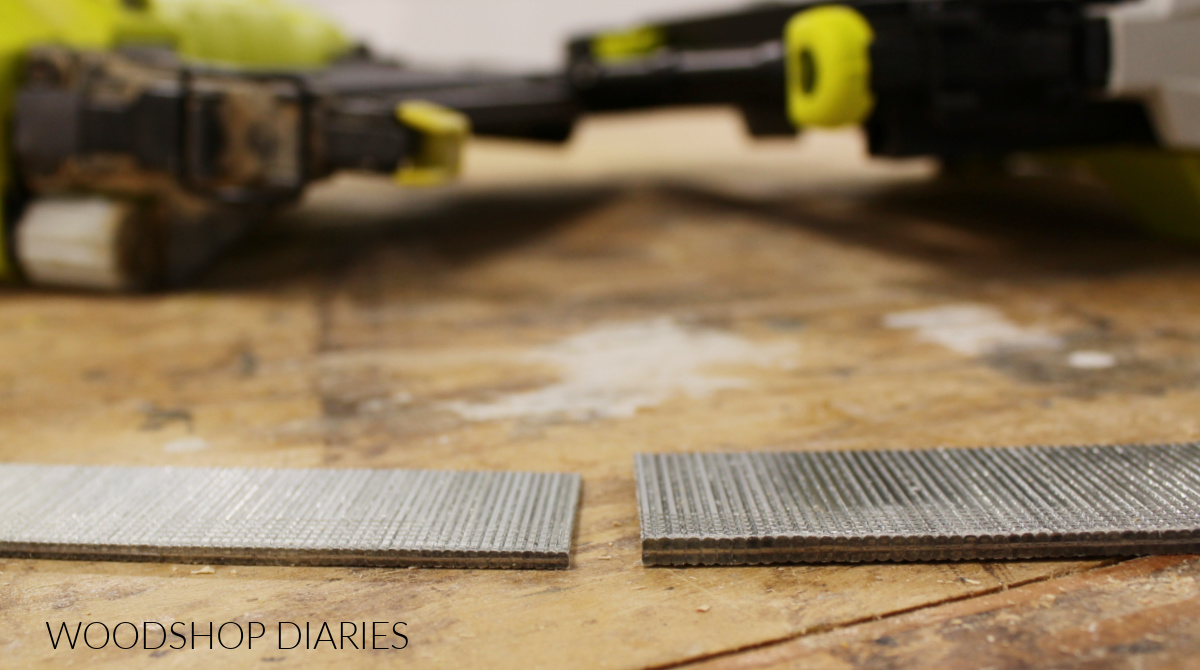
Credit: www.woodshopdiaries.com
Crown Stapler Vs Brad Nailer: Which Tool Should You Choose?
When deciding between a crown stapler and a brad nailer, it is important to consider the specific requirements of your project. Here are some project-specific recommendations:
For General Construction And Carpentry Projects:
- Both crown staplers and brad nailers are versatile options.
- A crown stapler is ideal for fastening upholstery, insulation, and other materials requiring a secure hold.
- A brad nailer is suitable for delicate woodworking tasks, such as attaching trim or molding without causing splits or visible holes.
For Furniture And Cabinet Making:
- For assembling furniture or cabinets, a brad nailer is recommended.
- The smaller size and finer gauge of the brad nails ensure a secure yet inconspicuous bond.
For Outdoor Projects And Roofing:
- For applications that require weather-resistant fastening, such as roofing or outdoor woodworking, a crown stapler is the better choice.
- Crown staples provide a stronger hold against elements and heavy-duty materials.
- However, for attaching shingles, a roofing nailer may be more suitable.
When weighing the decision, it is crucial to consider these project-specific factors in order to choose the most appropriate tool. Other important considerations include the availability of compatible fasteners, the power source (pneumatic or cordless), and personal experience or preference with each tool.
In summary, the choice between a crown stapler and a brad nailer depends on the intended use and requirements of your project. Consider the specific factors mentioned above to make an informed decision.
Frequently Asked Questions For Crown Stapler Vs Brad Nailer
What Holds Better Brad Nails Or Staples?
Brad nails hold better than staples, as they provide stronger and more secure fastening for various woodworking applications. Staples are more suitable for temporary or light-duty tasks.
Can A Brad Nailer Shoot Crown Staples?
No, a brad nailer cannot shoot crown staples. Brad nailers are designed specifically for brad nails, which are smaller and more delicate than crown staples. Crown staplers are a separate tool that is specifically designed for shooting crown staples.
Do Staples Hold Better Than Nails?
Staples generally hold better than nails due to their ability to grip the material more securely. The flat surface of a staple provides a wider area of contact, reducing the risk of pulling out. Additionally, staples have curved legs that create friction and prevent them from easily sliding out, ensuring a stronger hold.
Can You Install Crown Molding With A Brad Nailer?
Yes, you can install crown molding with a brad nailer.
Conclusion
To summarize, both crown staplers and brad nailers have their own unique purposes and advantages. Crown staplers are great for heavy-duty tasks and provide strong, secure fastening, while brad nailers excel in delivering precise, discreet results for delicate projects. Ultimately, the choice between the two depends on the specific project requirements and personal preference.
So, make your decision wisely and enjoy the efficient and effortless tooling experience!

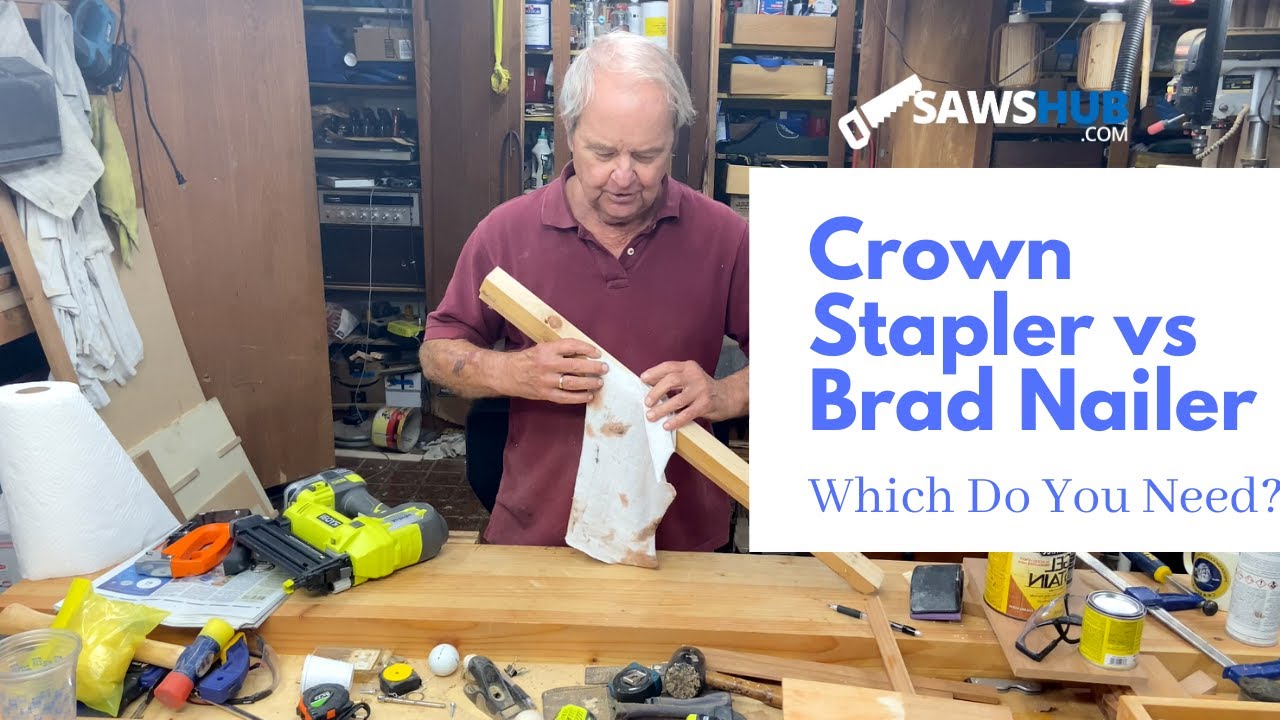
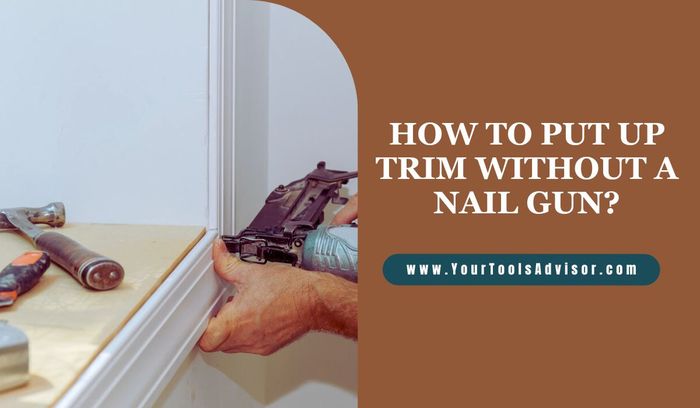
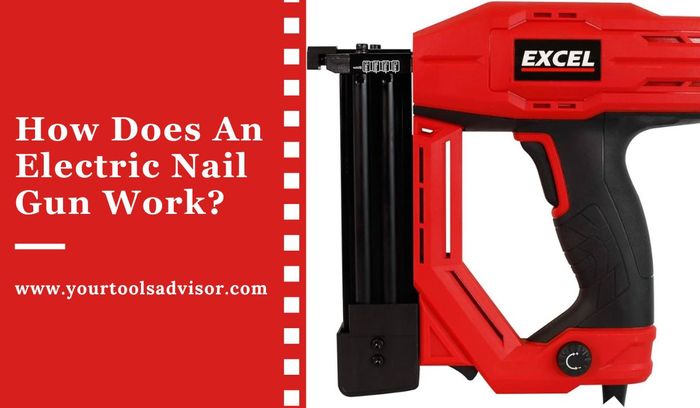
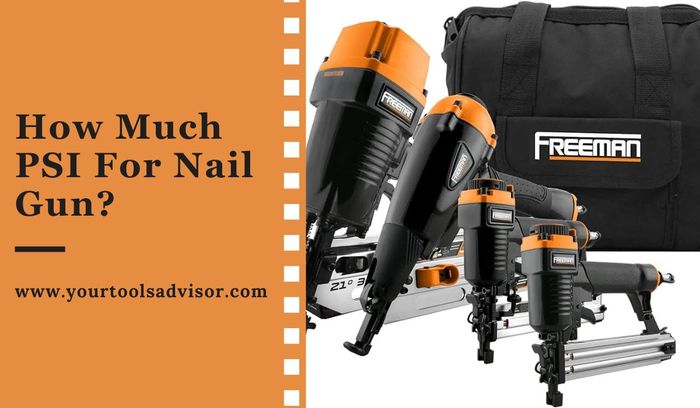
Leave a Reply